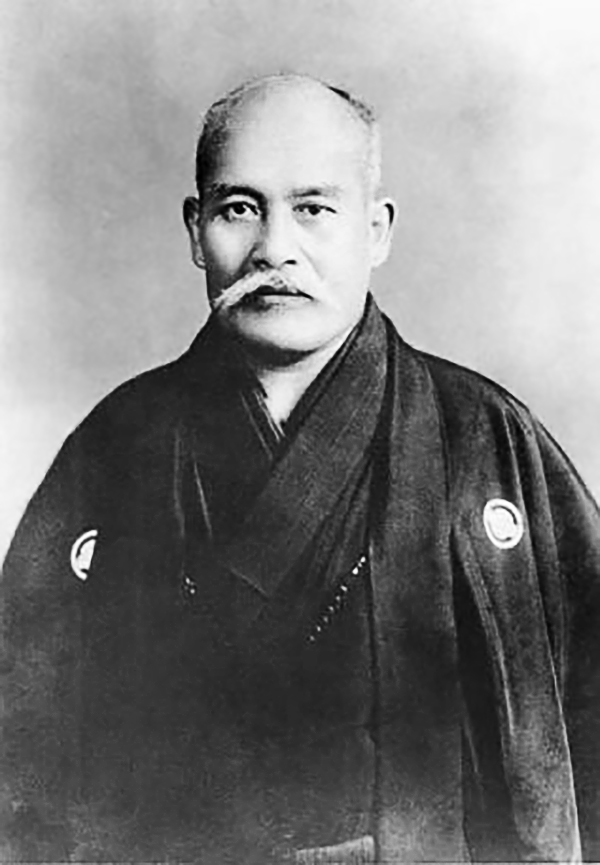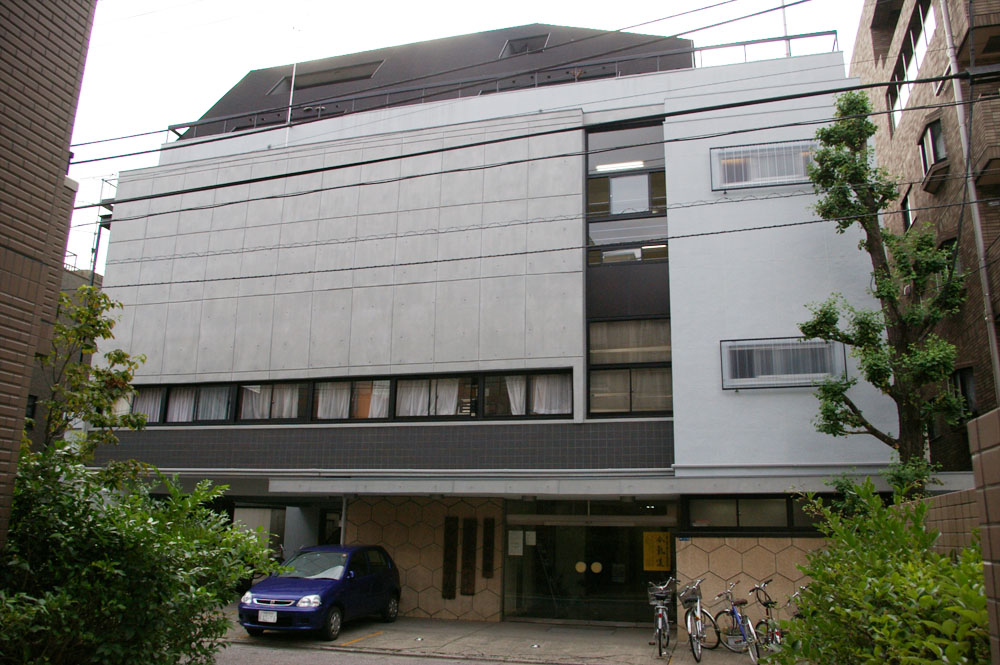|
Aikido Styles
Though the art of aikido is characteristically different from other Japanese martial arts, it has a variety of identifiable styles within the family of organizations descending from the teachings of Morihei Ueshiba. Pre-war aikido In the pre-war period, aikido was still in formation and had not yet established itself as a separate art from that of Daito-ryu aiki-jujutsu. However, it was fast attaining an identity of its own. In 1942, the Dai Nippon Butoku Kai, in its efforts to standardize Japanese martial arts, came to an agreement with representatives of Ueshiba's school that the name aikido would be used to refer to the Jujutsu, jujitsu derived art form Ueshiba had brought to prominence. The first style derived from Ueshiba's aikido was: * Yoseikan Aikido, Yoseikan aikido, begun by Minoru Mochizuki in 1931. Post-war aikido (first 40 years) In the post war period, the Aikikai, Aikikai Foundation led by the Ueshiba family has become the most successful organisation in terms of g ... [...More Info...] [...Related Items...] OR: [Wikipedia] [Google] [Baidu] |
Aikido
Aikido ( , , , ) is a gendai budō, modern Japanese martial art which is split into many different styles including Iwama Ryu, Iwama Shin Shin Aiki Shuren Kai, Shodokan Aikido, Yoshinkan, Renshinkai, Aikikai, and Ki Aikido. Aikido is now practiced in around 140 countries. It was originally developed by Morihei Ueshiba, as a synthesis of his martial studies, philosophy and religious beliefs. Ueshiba's goal was to create an art which practitioners could use to defend themselves against attacks, while also protecting the attackers from injury. Aikido is often translated as "the way of unifying (with) Qi, life energy" or as "the way of harmonious spirit". According to the founder's philosophy, the primary goal in the practice of aikido is to overcome oneself instead of cultivating violence or aggressiveness. Morihei Ueshiba used the phrase to refer to this principle. Aikido's fundamental principles include: (entering), , (breathing control), (triangular principle), and (turn ... [...More Info...] [...Related Items...] OR: [Wikipedia] [Google] [Baidu] |
Noriaki Inoue
was a Japanese martial artist, who was in his early years closely associated with the spiritual and technical development of aikido along with his uncle Morihei Ueshiba. Inoue is the founder of Shinwa Taidō, a martial art which he later renamed to Shin'ei Taidō. He was the fourth child of Zenso Inoue, the patriarch of the wealthy Inoue family of Tanabe, and of Tame Ueshiba, the eldest sister of Morihei. Much of Noriaki's childhood was spent in the company of Ueshiba. He joined his uncle at Shirataki in a settlement expedition in the north of the island of Hokkaidō (1912–1919) and studied the Daito-ryu Aiki-Jutsu with him under Sokaku Takeda. He was also closely associated with the discovery by Ueshiba of the Omoto sect in Ayabe and his encounter with its spiritual leader Onisaburo Deguchi which had a decisive influence in Ueshiba's later philosophy. Inoue then actively collaborated with his uncle into the spreading of '' aikibudō'', the art derived from the '' daitō-ry� ... [...More Info...] [...Related Items...] OR: [Wikipedia] [Google] [Baidu] |
Roy Suenaka
Roy Yukio Suenaka (June 25, 1940 in Honolulu – February 8, 2020) was an American martial arts practitioner, author, and founder of the Wadokai Aikido.Suenaka, R. & Watson, C. ''Complete Aikido,'' Tuttle Publishing, 1998.Suenaka, R. & Watson, C. "Spiritual Versus Martial Aikido – Explanation & Reconciliation," ''Journal of Asian Martial Arts'', Vol. 5 # 1, 1996. Early life As a child in Hawaii, Suenaka suffered from severe asthma, which was treated by his grandfather with reiki. He began martial arts training with his father, Warren Suenaka, from an early age, learning the family styles of jiujitsu and kenjitsu. Suenaka credits this training with the remission of his asthma. As well as training with his father, Suenaka also studied under Henry Okazaki and James Mitose. He also studied judo. Suenaka attended Koichi Tohei's aikido demonstrations in 1953, and at his father's behest began training primarily in that art. He also took up the study of kendo in 1955. Military caree ... [...More Info...] [...Related Items...] OR: [Wikipedia] [Google] [Baidu] |
Shoji Nishio
was a Japanese aikido practitioner and innovator. He held the rank of 8th dan shihan from the Aikikai. He also achieved multiple high ranking honors in other martial arts from different lineages, most notably Iaido, Judo, Karate. Nishio developed his Aikido style based on his understanding of Aikido founder Morihei Ueshiba's teaching and experience with other martial arts. His style has been described by practitioners as dynamic, natural and effective. The uniqueness of his style compared to other Aikido styles is the integration of the sword principles and atemi mechanics into Aikido techniques. His contributions to martial art includes the creation of a new school of iaido, the introduction of aikido koshinage, different mechanical interpretations of classical budo concepts, among others. Some emphases of his Aikido style include the importance of acknowledgement of opposition, weapon techniques, atemi, and natural stance. Nishio's role to Aikido extended beyond technical asp ... [...More Info...] [...Related Items...] OR: [Wikipedia] [Google] [Baidu] |
Nishio's Style
Nishio style Aikido, often simply referred to by Aikido practitioners as ''Nishio Aikido'', is a martial art style created by Shoji Nishio, a prolific Aikido practitioner. His style is characterized as dynamic and effective. Atemis and sword principles are deeply embedded in techniques. Philosophy, views Style classification While utilizing different underlying core mechanics, Nishio never considered his Aikido to be a different school of Aikido (like Iwama Ryu, Ki Society, Yoshinkan, Shodokan Aikido, etc.) He wanted his approach to be a branch part of Aikikai umbrella. As such, he decided against calling his Aikido style "Nishio-ryu" (but not the same for Iaido). Engagement with oppositions Nishio believed that one of Aikido's core tenets is about acknowledging the other person. Most Aikido techniques offer 3-4 opportunities to strike down an opponent but ultimately choose the least damaging option. Even when throwing, he said, Aikido practitioners should try ''not'' t ... [...More Info...] [...Related Items...] OR: [Wikipedia] [Google] [Baidu] |
Kanshu Sunadomari
Kanshū Sunadomari (Kanji: 砂泊 諴秀 Hiragana: すなどまり かんしゅう 1923 – November 13, 2010) was a Japanese aikido teacher who was an uchideshi to the founder of aikido, Morihei Ueshiba. He founded the aikido style Manseikan Aikido. Biography Sunadomari was born on the island of Kikaijima in Kagoshima Prefecture, Japan and in his teens became an uchideshi of Morihei Ueshiba, the founder of aikido. His live-in apprenticeship under the founder took place during World War II, and he also spent a brief period at the Aikikai Hombu Dojo after the war. On October 23, 1953 he gave the first public demonstration of aikido in Kyūshū. The following January he opened up the Manseikan dojo (万生館) on the premises of the Tettori Shrine (手取神社) in the heart of Kumamoto City. His aikido spread throughout Kyūshū to cities such as Fukuoka, Kagoshima, Nagasaki, and Miyazaki. During this time, the number of practitioners rose to over 20,000 with over 3,000 ... [...More Info...] [...Related Items...] OR: [Wikipedia] [Google] [Baidu] |
Seigo Yamaguchi
was a Japanese 9th-dan aikido instructor and important teacher in the Aikikai. According to Mitsugi Saotome, before he was sent to Burma in 1958, he was the most prolific teacher at Aikikai Hombu Dojo. His personal students included Seishiro Endo, Yoshinobu Takeda, Masatoshi Yasuno and Christian Tissier. Yamaguchi was born April 13, 1924, in Fukuoka, Japan. After his early education, he entered the navy, where he was eventually to carry out a ''Kamikaze'' suicide mission, but was saved by the end of World War II. He was introduced to Morihei Ueshiba in 1950, and entered the Aikikai in 1951. In 1958 he was sent to Burma to teach aikido to the army. Beginning in 1961 he again taught at the Aikikai Hombu Dojo; he also taught at his own dojo and at Meiji University is a Private university, private research university in Chiyoda, Tokyo, Chiyoda, Tokyo, Japan. Originally founded as Meiji Law School () by three lawyers in 1881, it became a university in April 1920. As of May 202 ... [...More Info...] [...Related Items...] OR: [Wikipedia] [Google] [Baidu] |
Aikikai Honbu Dojo
The Aikikai is the original school of Aikido. It is centered on the Aikikai Foundation in Japan, and its figurehead is the Doshu (the family heir of the founder of Aikido). It is represented globally through the International Aikido Federation. Aikikai Foundation The is the original aikido organization. It has been an incorporated entity in Japan since 1940 under the name , then re-registered under the name "Aikikai" after the ban on Aikido practice was lifted by the GHQ in 1948. It is headed by the doshu, the living successor of the founder of aikido. The Aikikai Foundation operates Hombu dojo, which is also named Aikido World Headquarters. It is sometimes called the Aikikai Hombu to distinguish it from the headquarters of later aikido organisations. It is located in Tokyo. The term "Hombu" may sometimes be used loosely to refer to the upper echelons of instructors at Hombu dojo, or to the Aikikai Foundation itself. The Aikikai Foundation also currently manages one sat ... [...More Info...] [...Related Items...] OR: [Wikipedia] [Google] [Baidu] |
Hitohiro Saito
Hitohiro Saito (斎藤 仁弘 ''Saitō Hitohiro'', born 12 February 1957 in Iwama) is an aikido instructor and founding headmaster of Iwama Shin-Shin Aiki Shuren-kai. Hitohiro is the son of Morihiro Saito. At age seven, he started to learn aikido from Morihei Ueshiba, the founder of aikido, who cared for him as a grandson.. After Ueshiba died in 1969, he continued his practice with his father. The younger Saito became an official instructor of the Iwama dojo in 1986 and remained so until 2004 when he separated from the Aikikai organization and formed his own group. Since 2009 he is also identified as Hitohira (仁平) Saito. Personal history Years before his father's death, Hitohiro took over the main work at the Founder's dojo and Shrine of Aiki, Aiki Jinja, thus relieving his aging father of the great amount of work required in running the campus. His father spent his last years taking care of the vegetable gardens and travelling abroad for seminars. The main teaching of the ... [...More Info...] [...Related Items...] OR: [Wikipedia] [Google] [Baidu] |
Iwama Style
Iwama-style Aikido is the style of aikido that was taught in Iwama by the founder of aikido, Morihei Ueshiba, and especially the lineage passed on through Morihiro Saito, a close disciple who was given responsibility over Iwama dojo by Ueshiba. It is also known by other names including (see: ''ryū'') and Iwama Aikido. It is often associated with the term after the martial concept. It is sometimes also referred to as Traditional or (, lit. traditional). It is sometimes called Saito style, though never by Iwama stylists themselves as Saito insisted that he intended to preserve the founder's style. Ranks At one point Saito gave out specific ranks at the insistence of his European students. However, he always awarded ranks through the Aikikai (original Aikido organization) out of respect for the Ueshiba family. Saito also gave out mokuroku (scrolls) for his ''aiki-ken'' (sword) and ''aiki-jo'' (staff) with levels loosely modeled after the traditional license system of clas ... [...More Info...] [...Related Items...] OR: [Wikipedia] [Google] [Baidu] |


